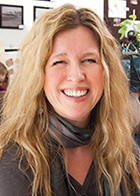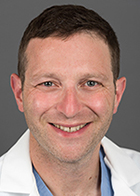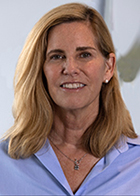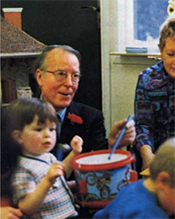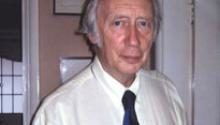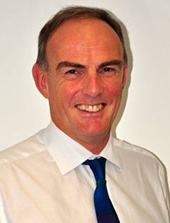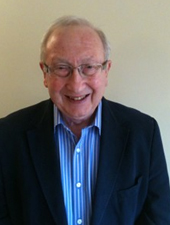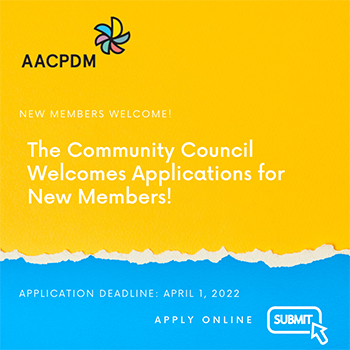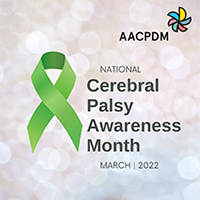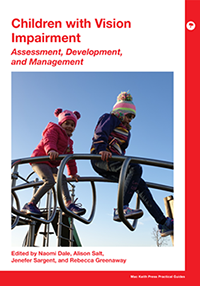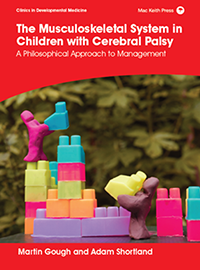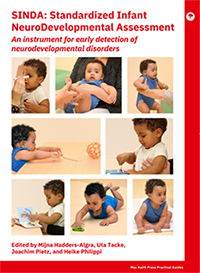
AACPDM President’s Message
In 2013, the six pillars of our Strategic Plan were developed. The current plan was completed in 2018. It was co-facilitated by our very own Maureen O’Donnell and Darcy Fehlings. They were selected as the co-facilitators after discussions with the Board and Past Presidents. As Past Presidents of the AACPDM, both Maureen and Darcy are committed to the longevity of the organization and are passionate about the work of Academy members. They volunteered their time to guide the board through updates. Their leadership helped AACPDM review and define our needs. At that time, the six pillars remained relevant and were therefore retained. The objectives and strategies under each were expanded and developed further. The existing plan has worked effectively for our organization for the past two cycles. It was time to update the strategic plan again in 2021, but the AACPDM board voted to postpone the work on the plan as in person meetings, so critical to an effective process, were not possible last year. To kick off the 2022 planning, the AACPDM held two town hall meetings focusing on the challenges and opportunities that are coming our way, both as professionals and an Academy. We appreciated the member input during those town halls. Diversity, Equity and Inclusion (DEI) issues are very important to the AACPDM. If one peruses the academy’s records, you can see it through the years. The Academy developed a DEI statement in 2019, posting it publicly on our website in 2020. The Academy works toward using the DEI principles to continue to fulfill our mission to promote excellence in research and services for the benefit of people with and at risk for cerebral palsy and other childhood onset disabilities. These areas were important for member feedback and also important to consider as we proceed with updating our Strategic Plan. The AACPDM Board is excited to work with national experts and consultants from Vista Cova as we create the next strategic plan. The new plan will not necessarily have the same pillars and approaches as the last two plans, but let’s take a look at what we have accomplished in these pillars over the years (click on each goal to see the details): GOAL #1: TALENT POOL GOAL #2: RESEARCH GOAL #3: LEARNING INNOVATION GOAL #4: PARTNERSHIP & COLLABORATION GOAL #5: SERVICE DELIVERY AND QUALITY IMPROVEMENT GOAL #6: ORGANIZATIONAL EXCELLENCE Thank you to the membership whose hard work and dedication is at the core of this successful report! The results of the 2022 plan will be shared with the membership in our quarterly newsletters and at the Fall 2022 Membership Business Meeting. Be well. Stay safe. First Vice President UpdateThe abstract submission website for the 76th AACPDM annual meeting is now closed and we are thrilled to have received over 400 abstracts! We continue to plan for an in-person meeting in Las Vegas, September 21-24, 2022. We will also remain responsive to ongoing developments related to the COVID-19 pandemic and current public health and travel restrictions. We would like to acknowledge the dedication and commitment of the 23 AACPDM members from diverse disciplinary and research backgrounds who agreed to serve on the Scientific Program Committee this year. Their time and expertise are valued and will play a significant role in ensuring the scientific quality of the annual meeting. The strength of the AACPDM comes from our diverse and dedicated membership who share a passion for a common mission and vision. Evidence of our strength and resilience these past two years includes two very successful online meetings and continued collaborations across countries and institutions, many of which were cultivated within the AACPDM. Our hope is that the 2022 meeting will provide many opportunities for both existing and new connections and collaborations. We look forward to seeing you all again and hope that you are as excited about the upcoming annual meeting as we are!
|
||||||||||||||||
|
Past President ReflectionsAACPDM and the Red Journal
Mac Keith served as Director of the Education and Information Unit, which not only supported the early journal known initially as the Cerebral Palsy Bulletin but also related books (e.g. Aicardi’s Diseases of the Nervous System in Childhood), and a bound series of periodicals known as Clinics in Developmental Medicine. They also sponsored a series of conferences in London, Oxford and elsewhere, hosted by Mac Keith and the Spastics Society, which became legends in the field, attracting international guests, many of whom went on to found units in their own countries. Some even attended another group that he chaired, the Medical Association for the prevention of War. Mac Keith Press over time evolved to electronic publishing, including online courses, videos, and podcasts, as well. The American Academy for Cerebral Palsy and Developmental Medicine was started in 1948 by similarly-minded physicians of related interdisciplinary fields. AACPDM was well known to the Englishmen and they went out of their way to make acquaintances such as Murray Goldstein, DO, a former director NIH National Institute of Neurological Disorders and Stroke, then Director of the United Cerebral Palsy Research and Educational Foundation, and as an AACPDM ex Officio Board Member. After many early interactions with members of the AACPDM, Martin Bax and Ronald Mac Keith travelled to Dallas in November of 1963, arriving the day of the President Kennedy Assassination, but persevering to sign an agreement with the American Academy for Cerebral Palsy as it was then known. Martin Bax recalls that night in his memoirs after Mac Keith passed in 1978:
“Ronnie is developing his journal. It must be international, so we are off over the Atlantic to negotiate with the Americans, landing in Dallas the night President Kennedy is shot. We arrive at the hotel for our meeting, to find our American colleagues struggling with the bewilderment of the assassination. I am jet-lagged and bewildered; perhaps we should postpone our discussion. Ronnie moves us all speedily to the committee room and for three or four hours he has us trashing out our arrangement to work together. He cheekily states that we have a lot to offer them, and they really have nothing to offer us. I am taken aback by this effrontery, but it seems to work out O.K, and Ronnie has another group of international friends.” The agreement meant that going forward the Academy would offer the journal as a benefit of membership. Many members chose the Journal as their preferred publication for their own manuscripts, and the Publications Committee of the AACPDM was well represented with reviewers and authors for the journal. Mac Keith was Publisher and Editor until his death in 1977, when Martin Bax took over. Martin Bax was not only a well-respected developmental pediatrician, but, while still in medical school, founded Ambit, a UK arts magazine, now going strong after 50 years. He also has written several novels (The Hospital Ship, Love on the Borders), children’s books, and even helped draft a Vietnam Symphony with trumpter Henry Lowther. Martin doubled the frequency of the Journal from 6 to 12 issues a year. Peter Baxter, of Sheffield Children’s Hospital, UK, became Editor in Chief in 2004: he introduced commentaries on selected papers and oversaw the transition to electronic submission of manuscripts, dramatically cutting decision times. Editor’s Choices and themed issues followed. Along with Editor Hilary Hart, Peter Baxter expanded the neurology focus and increased the journal’s impact factor. In 2015 Bernard Dan, of the University of Brussels in Belgium, took the editorial helm. He is past President of the European Academy of Childhood Disability (and also author of award-winning novels!), and has continued to shape the journal, enhance the international outreach and authorship, pen editorials, foster relationship with a number of AACPDM committees, and to add to the reputation and impact factor. Peter Rosenbaum was added as a North American Editor in 2011, breathing his unique style in the editorial adventure, and he contributes two editorials per year in addition to reviewing and supervisorial duties.
An Editorial Board meeting of Mac Keith Press was incorporated into the committee meetings held during the annual meeting to further facilitate discussions. The journal which had previously been manufactured in England and shipped to the US at considerable cost changed its production and distribution agent to Blackwell (eventually acquired by Wiley) which could electronically send the edited product to the US for printing and mailing at considerable savings. The costs to the Academy would be reduced by nearly 30% satisfying the financial goals of both groups. Dr. Rosenbloom retired in 2018. The Spastics Society had changed its name to Scope in 1994, and Mac Keith Press formally separated from Scope in 2018. Mac Keith is now an independent Charity and company. Both the AACPDM and Mac Keith have prospered over the years. The journal itself has emerged as a leader in the field. In the last few years, it beat several impact records (e.g. 2-year IF has now reached 5.445). Its outreach is more international than ever. So is the involvement of people with lived experiences in reviewing, writing invited commentaries and co-authoring research papers, in part thanks to collaboration between the Editor in Chief and the AACPDM Community Council. The book programme is also evolving, and several interactive courses are on offer. Members have been given the option to take Mac Keith Press books instead of the journal – initially print books; now ebooks. Both at institutional and personal levels, professional and scientific convergence being enhanced by genuine friendship. Following the foundational agreements in 1963, followed by the death of Ronald Mac Keith in 1977, progressing through the Martin Bax era, a very strong bond was already in place and ready for the modern technological era with first Peter Baxter, and then Bernard Dan. The sense of belonging is such that the Editor in Chief is now invited to attend the AACPDM Past-Presidents dinner at the annual meetings, and enjoys close connections with many who have been wonderful supporters of the Press. In addition to the many highly appreciated contributions from AACPDM members as authors, reviewers, Associate Editors and Editorial Board members, DMCN publishes an AACPDM invited editorial, and the meeting abstracts each year. AACPDM official papers can be published in DMCN with the AACPDM logo by mutual agreement; this has been done for evidence-based Care Pathways, consensus papers, or invited narrative reviews based on AACPDM lectures. This enhanced and special relationship seems even more important in an era where access to high quality, scientific, evidence-based information is so critical! This article was prepared by the Historian, William Oppenheim, and the Mac Keith Press including Editors Bernard Dan and Ann-Marie Halligan, with consultation from John Mantovani, and Dennis Harper. Further in-depth reading is available and recommended: History | AACPDM - American Academy for Cerebral Palsy and Developmental Medicine Ronald Charles Mac Keith – A Memoir (free ebook) An appreciation of Ronnie Mac Keith (1978) Committee CornerAdapted Sports & Recreation Committee The AACPDM Adapted Sports & Recreation Committee has had a productive year with the work of its various subcommittees: The Journal Article Digest subcommittee continues to review and summarize recent original research articles related to adaptive sports and work with the Communications Committee to promote these reviews. In preparation for the 2022 AACPDM Annual Meeting, the Community Forum subcommittee is planning the adaptive sports community forum, the Let’s Move! subcommittee is developing ideas for exercise/fitness sessions, and the Duncan Wyeth Award subcommittee is considering award candidates. The Equity & Participation subcommittee is identifying resources related to diversity, equity, and inclusion in adaptive sports to share via the Communications Committee. The Opportunities & Resources subcommittee is working on developing a comprehensive resource to identify different adaptive sports resources in different geographic locations and routinely promote these resources or events via the Communications Committee. Lastly, our committee is also looking into developing items that would list major adaptive sports resources to be shared with AACPDM members, who can then share these with their patients/members in the community to increase awareness and access to adaptive sports resources. We are still working on the development of these plans. Advocacy The Advocacy Committee has been busy this year! Our current exciting projects include building a reference toolkit on the AACPDM website that provides members with information they can use to advocate for their patients at the healthcare, state, and national level. We plan for this to go live on the website by the end of 2021 and it will be updated regularly. In addition to the toolkit, we are in the process of creating a survey to ask the membership how we can best meet their advocacy needs. We continue to collaborate with the AACPDM Community Council to identify the needs of persons with disability as well as their families. The advocacy committee is also developing a mini-symposium that we would like to present at the educational conference in 2022 focused on various advocacy topics. Finally, we continue to identify important current issues or an initiative of great work that another organization is putting forward that are relevant to the membership. After a vetting process, we relay these to the communication committee for dissemination to the membership. Communications The AACPDM Communications Committee has been active and busy over the past year with numerous activities. Social Media: Starting late summer, 2021 the Committee began a formalized plan to work with all the AACPDM Committees to gather information and ideas to populate our social media feeds. We have appreciated this teamwork mentality to help highlight the vision and mission of our Academy. Please contact us if there is something you would like to share with the world. Facebook: https://www.facebook.com/aacpdm Website: Following the AACPDM 75th Anniversary Annual Meeting we were excited to launch the new AACPDM website! Please check it out here: www.aacpdm.org. If you have pictures you would like to share with us to use on the website, you can reach out to the AACPDM staff at info@aacpdm.org and they will provide all information related to the format and release needs. We have appreciated the work of the newly appointed AACPDM Webmaster, Dr. Julie Sees. Newsletter: If you have ideas for articles for the next newsletter, please don’t hesitate to share them with us at info@aacpdm.org. International Affairs The aim of the international scholarship program is to bring together international professionals working with cerebral palsy, to give them AACPDM educational/training opportunities, and to build networks around the world. The IAC is working on expanding the individual scholarship program to include an institutional scholarship to increase support to local communities. The 2021 International Networking Luncheon was a great success. Although virtual, the IAC recognizes advantages to this format, which placed focus on the winners and their work (successes and challenges) within their institutions/countries. Over 80 persons attended, and many were involved in rewarding discussions with the winners. The IAC proposes to continue with the International Networking Luncheon (in-person networking) in addition to a separate International Scholarship session (highlighting international work) at the next AACPDM annual meeting to increase the impact of the scholarship program. Membership Committee If you are one of the AACPDM's long-standing members, and enjoy guiding young professionals early in their career, the Membership Committee would like to invite you to participate as an Advisor in the Annual AACPDM Advisor Support Program. You will be encouraged to connect with your Advisee regularly throughout the year; once prior to the Annual Meeting, and then periodically throughout the remainder of the year. We encourage the Advisor/Advisee to be open to consultation on topics such as how the Academy can help him/her with career development (ie. committee participation, grants and scholarships, networking and as a means of establishing life-long relationships with peers nationally and internationally). The ‘Advisor/Advisee’ relationship is not required to continue after the 1 year term, but if both parties agree to continue communication that would be a successful outcome of the program. Advisor profiles will be available in spring. Stay tuned here: https://www.aacpdm.org/get-involved/advisor-program for more information. Research Committee One of the objectives of the Research Committee is to invite and evaluate research applications and recommend the best applications for funding. During the 2021 cycle, the research committee reviewed 42 applications leading to 3 grants awarded by Pedal with Pete, 1 grant awarded by the Cerebral Palsy Alliance Research Foundation, and two grants awarded by the National Pediatric Rehabilitation Resource Center (C-PROGRESS). The total funding was $150,000! AACPDM is extremely grateful to our partners for providing these outstanding opportunities. The Research Committee also organized and held the Pre-Conference course “How to Establish a Research Program Focused on Cerebral Palsy” at the 2021 Annual Meeting. We thank the 36 attendees for their participation in this exciting pilot course and look forward to offering it again in the future. Community Council The primary purpose of the AACPDM Community Council is to provide the voice of lived experience from a variety of stakeholders to enhance the mission of the AACPDM. Our goals include pursuing opportunities to collaborate for the health, wellness and support of those with Cerebral Palsy and other childhood-onset disabilities. The AACPDM Community Council Members have been invited by several of the AACPDM Committees to serve as liaisons to bring that voice into the work of the Committees. This fruitful relationship has allowed for increased stakeholder input as a part of numerous activities of the Academy, and we look forward to more such opportunities in the future. March is National Cerebral Palsy Awareness Month, and Cerebral Palsy Awareness Day is Friday, March 25th. The Community Council is preparing to celebrate National Cerebral Palsy Awareness Month by starting an annual call for applications for Council members that will be highlighted throughout the month of March. Watch the AACPDM Social Media outlets and your email for more information. If you know a parent or a person with lived experience who would be interested, please encourage them to apply here: https://www.aacpdm.org/forms/community_council.php The AACPDM Community Council hosts an annual Community Forum, which is a FREE educational event for families and individuals with cerebral palsy or other childhood-onset disabilities. There would be no better time than March for you to encourage the families you work with to explore these events that are available to be viewed on demand here: https://www.aacpdm.org/get-involved/community-forum The Community Council appreciates regular input from many of the Committees that ultimately help structure the roadmap for our annual activities. Please reach out to the AACPDM Staff at info@aacpdm.org if you have an item you would like to discuss with the Council.
AACPDM SIGS – Specially Designed for You!AACPDM Special Interest Groups (SIGs) AACPDM Adult and Aging SIGS Elements of Data from NINDSNINDS Cerebral Palsy Common Data Elements – Updates are coming!
Through a partnership with the AACPDM, the National Institute of Neurological Disorders and Stroke (NINDS), the CP specific Common Data Elements (CDE) were developed as part of the NINDS project to develop data standards for all NIH funded clinical research in neuroscience. Since the NINDS CP CDEs were published online in December 2016, an Oversight Committee has been working to update and add to these elements either through gaps identified by the Oversight Committee or by submitted comments from individuals. The Oversight Committee is currently working on CP CDE for surgical interventions of the lower extremities and chronic pain. Once these are completed, please watch for the opportunity to comment on the proposed additional CP CDE and measures for orthopedic surgery and chronic pain. Information on this will be made available through AACPDM. The CP CDE can be accessed by anyone at any time through the following web site: https://www.commondataelements.ninds.nih.gov/cerebral%20palsy or by entering NINDS CP CDE in your search browser. Respectfully submitted, Carolina Mendoza-Puccini, MD
Sponsor Spotlight
Mac Keith Press Update
Book highlights
Children with Vision Impairment: Assessment, Development, and Management Vision impairment is a long-term condition caused by disorders of the eye, optic nerve, and brain. Using evidence-based knowledge, theory, and research, this book provides practical guidance for practitioners who are involved in the care and management of children with long-term vision impairment and disability. The book is divided into four sections following the ICF-CY model: (1) eye disorders, vision and brain, (2) child development and learning from birth to older childhood, (3) habilitation, orientation, reading and assistive technologies and (4) social relationships and participation in everyday contexts.
Pre-order now! The Musculoskeletal System in Children with Cerebral Palsy: A Philosophical Approach to Management Do we need a paradigm shift in our approach to the assessment and management of the musculoskeletal system in children with cerebral palsy? This book encourages clinicians to reflect on how their thoughts and approaches are shaped by the clinical society. Using new perspectives and expertise, this book will inspire clinicians to rethink conventions about the child with cerebral palsy, consider how they communicate these new concepts to their fellow clinicians, and act to bring about positive changes in the management of children with cerebral palsy.
Pre-order now! SINDA: Standardized Infant NeuroDevelopmental Assessment Is there a way to accurately predict neurodevelopmental disability within the first year of life? Standardized Infant NeuroDevelopmental Assessment (SINDA) has been developed as a screening instrument for infants aged 6 weeks to 12 months corrected age, to assist early detection of infants at high risk of neurodevelopmental disorders. It is the first developmental instrument to allow a comprehensive (360-degree approach) including “all” dimensions of development. It can be used quickly in virtually any environment and requires only simple equipment, so excellent when financial and time considerations are important. Podcasts Blogposts An Interview with Holly Tuke and Naomi Dale – Mac Keith Press
Genetic diagnosis of basal ganglia disease in childhood Neurological features in infants with congenital heart disease Declining prevalence of cerebral palsy in children born at term in Denmark Letter from the EditorThank you for reading through the newsletter. We (the contributors, myself, and especially Tamara Wagester who put this together) sincerely hope you find this informative, entertaining, and helpful. The Academy is active year round and there is always an opportunity and need for you to contribute to the continued progress by joining a committee. As winter evolves into spring in the northern hemisphere, I wish you to feel the invigoration of new growth, of coming flowers, of pleasant times. Until next meeting, peace to you.
Steve Couch |
|||||||||||||||

